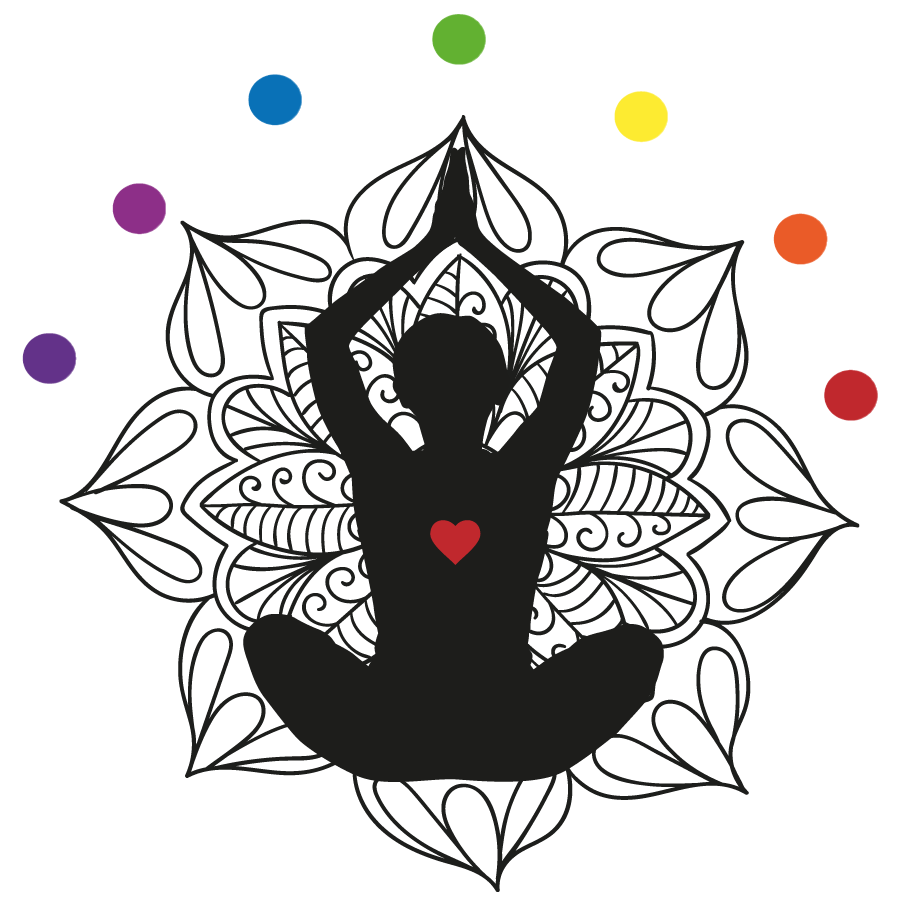Want to take your chattering mind offline for a few minutes? Want to take a break from dwelling on the death of democracy and the spread of the corona virus?
Here’s an easy-to-follow recipe:
Record yourself reading this post aloud – slowly and in a calm, loving, reassuring voice [or listen to the recording inserted at the bottom of this post].
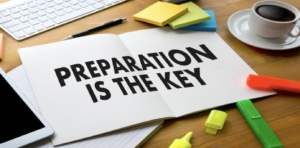
Preparation:
- Find a quiet, comfortable place to sit.
- Sit upright.
- Practice anulom vilom breathing for a few minutes [refer to the January 12 post on this page].
- [Here’s where you might start your recording].
- Close your eyes almost all the way.
- Draw your attention to your relaxed, rhythmic breathing: note the sensation and duration of each inhalation and exhalation.
You’re about to take a journey deep inside yourself, through six “energetic layers” of your being to the essence of who and what you are – moving from the densest to subtlest aspect of yourself: from the outside in.
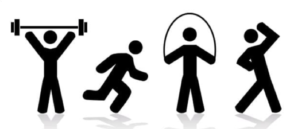
Your outer body
Starting with key aspects of your outer body, draw your attention from one to the next – pausing briefly to feel each, to exhale, releasing any tension or stress:
- Begin by drawing your attention to your toes.
- Then to the soles of your feet.
- Then to your calves.
- Then to your knees.
- Then to your thighs.
- Then to your hips.
- Then to your waist.
- Then to your lower back.
- Then to your mid-back.
- Then to your upper back.
- Then to your neck.
- Then to your head.
- Then to your shoulders
- Then to your upper arms.
- Then to your elbows.
- Then to your forearms.
- Then to your wrists.
- Then to your palms.
- And then to your fingers.
These are the energetically densest parts of you. These are the parts that protect and propel you throughout each day. In whatever way makes sense to you, express appreciation for these aspects of yourself. Thank them for doing their job and let them know that for the next several minutes they may rest.
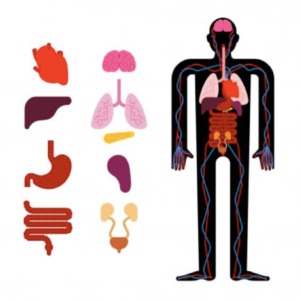
Your energy body
Now, leave your outer body behind and turn your attention inward to your softer, more subtle energy body – and do the same thing: draw your attention from one key internal organ system to the next – pausing briefly to “feel” each of them, and exhale, releasing any tension or stress from each:
- Begin by drawing your attention to the area below your waist, to your reproductive and elimination organs and systems.
- Then draw your attention upward to the area behind your navel, to your stomach and other digestive organs and systems.
- Then draw your attention upward to your heart. Pause here and see if you can literally feel your heart beating – as it pumps blood through every cell of your body.
- Then draw your attention upward to your throat, the source of your voice and the passageway that connects your brain with the rest of your body.
- And then draw your attention upward to the area behind your eyes and between your ears to your brain.
These are the energetically subtler physical parts of your body that sustain you, that keep you alive. In whatever way makes sense to you, express appreciation for these aspects of yourself. Thank them for ceaselessly doing their job and let them know that for the next several minutes they needn’t work so hard.
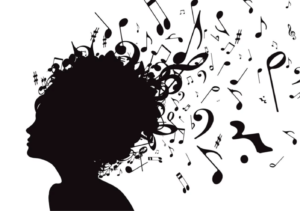
Your conscious mind
Now, leave your physical body behind and turn your attention to your non-physical mind – specifically, to your thoughts and the voice in your head. These are evidence of your conscious or “thinking” mind.
Pause here to contemplate the following about this miraculous, critical aspect of yourself – which you can control:
- This is the aspect of your mind you’re most aware of; you “hear” it functioning; you use it throughout each day to judge, analyze and make decisions.
- This aspect of your mind functions like your heart and lungs: single, consecutive, constant beats, breaths, and thoughts. [Skeptical? Try simultaneously solving two simple math problems – or simultaneously counting and reciting the alphabet. Similarly, you can no more stop your thoughts than you can stop your heart or lungs!]
- You can control the direction and duration of your thoughts (as you were just doing when you brought your attention to the various parts of your physical body).
- While you can’t stop this part of your mind from functioning, you can pause the judging, analyzing and deciding to quietly, consciously, mindfully observe your sensations and actions.
- There are three types of original thought: you can perceive something correctly, incorrectly or you can imagine it. You can also use this aspect of your mind to call up memories from your sub-conscious mind.
- There are five internal influences that affect your thoughts. [The key to addressing them is recognizing that you have more power over them than the external factors that trigger them.] The depth or absence of your faith in the existence of a higher power has a huge impact on your thoughts as it affects how you perceive life generally. Thereafter, the other influences on your thoughts are ego, desire, aversion, and fear.
This is the most observable aspect of your nonphysical mind. You use this part of your mind throughout each day to decide what to wear, what to eat, what to do, and how to do it. In whatever way makes sense to you, express appreciation for this part of yourself. Thank it for ceaselessly doing its job and let it know that for the next several minutes it needn’t work so hard.
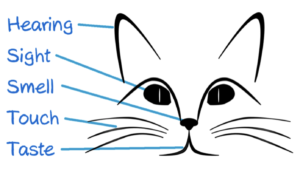
Your sub-conscious mind (level 1)
Now, step beneath your relatively noisy conscious mind into the quiet of your sub-conscious mind (i.e., the aspect you’re typically unaware of). Your sub-conscious mind is always “on”; silently “running the ship”; it multi-tasks flawlessly as long as your conscious mind isn’t distracted. Your sub-conscious mind has three primary responsibilities, each corresponding with a distinct energetic density or layer.
This outer, most energetic layer is the “doing” aspect of your mind; it’s responsible for bodily functioning; specifically, sensory processing and bodily movement.
For the next few moments you’re going to draw your attention from one of your senses to the next – pausing briefly to fully experience and appreciate each of them:
- Begin by drawing your attention to your sense of hearing. How many distinct sounds can you hear? What’s the loudest? What’s the quietest?
- Draw your attention to your sense of smell. How many things can you smell? What’s the most obvious? What’s the most subtle?
- Draw your attention to your sense of taste – to your pallet. Can you still taste whatever you last had to eat or drink?
- Draw your attention to your sense of touch; specifically, to the sensation of sitting; of resting your hands in your lap; of your feet on the floor; and the feeling of the clothes against your skin.
- Draw your attention to what you “see” in your mind’s eye (keep your eyes almost closed). Is whatever you “see” clearly defined? Does it have color?
This aspect or layer of your mind is responsible for keeping you alive, constantly receiving and processing external data and executing all your bodily functions.
In whatever way makes sense to you, express appreciation for this part of yourself. Thank it for ceaselessly doing its job and let it know that for the next several minutes it can relax.
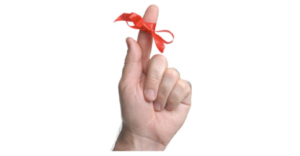
Your sub-conscious mind (level 2)
Now, step down beneath your senses to the next-to-the-last layer of your tangible being: the level of your mind where your memories are stored.
You’re going to spend the next few minutes using your conscious mind to reach down into this aspect of your typically sub-conscious mind to call up specific memories and examine them.
You can do this with any memories – but for this exercise, you’ll recall two hopefully pleasant ones:
- First, recall your most recent meal. Consider it with each of your senses. Was there a sound associated with eating it (e.g., was something crisp or crunchy)? Can you remember what it smelled like? What it tasted like? Can you remember holding the fork or spoon – or the sensation of holding whatever it was? Can you see what it looked like, it’s texture, size, shape and color?
- After holding those recalled sensations in your conscious mind for a moment, let go of that memory and recall the “happiest moment of your life”. Go with whatever first pops into your conscious mind. It doesn’t matter what it is – or if indeed it was the happiest; you can always do this with other memories later. Where were you? Who was there? Can you see the moment in detail? Were there particular sounds or smells (e.g., if it happened near the shore, can you hear the ocean and smell the salt air)? Do you recall any taste associated with it? Can you recall the physical sensations associated with the experience (e.g., were you sitting, standing, laying down – how did it feel)?
Imagine life without this quieter, less energetically demanding layer of your sub-conscious mind – without the ability to recall everything you’ve learned and experienced. It would certainly make life a lot harder!
In whatever way makes sense to you, express appreciation for this part of yourself. Thank it for tirelessly doing its job and let it know that for the next several minutes it can relax.
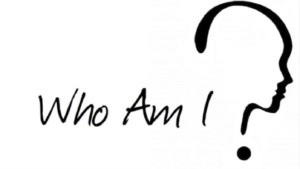
Your sub-conscious mind (level 3)
Now step beneath your memories and experience the quietest, most subtle vestige of your mind: your mental “root”: the vantage point from which you witness life; your elemental sense of “I am”.
This is your instinctive awareness that you are alive and unique, distinct from everyone and everything else – the “I am” perspective from which your conscious mind may occasionally egotistically think “I am smart, tall, fast, lean, happy, etc.”
One way to access this prime aspect of your mind is to imagine losing something. Loss inherently evidences and exposes this vital aspect of you. While the sensation of loss is far more powerful than one’s innate sense of self, the former may be used as a trailhead to uncover the latter.
Bring to mind one of your favorite things. It could be anything: an article of clothing, a musical instrument, a piece of jewelry, a car, your favorite ice cream. Contemplate it as you did before with each of your senses – and then imagine it’s suddenly taken away from you. Beneath any discomfort you may experience is your fundamental sense of “being”. Contemplate the distinction between the uncomfortable feeling of loss (the affect) – and the sense of “you”, who’s feeling it (the affected). The latter is evidence of this foundational aspect of your mind.
In whatever way makes sense to you, express appreciation for this primary aspect of yourself. Thank it for ceaselessly doing its job and let it know that for the next several minutes it can relax.
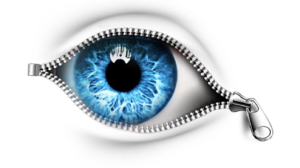
Your consciousness
You can’t step down any further. Your mental “basis” is the subtlest, quietest level of your mind that you can experience; however, there is something within you that’s subtler than it: your awareness OF it – but because of its nature, you can’t literally experience that.
Your awareness or consciousness is unlike anything else known to man.
You know it exists, since without it you wouldn’t be aware of your body, sensations, thoughts and memories.
But your consciousness isn’t tangible. It doesn’t consist of atoms and energy like everything else. It can’t be measured. It has no shape or form. It can’t be altered. It can’t be destroyed. Unlike everything you’ve ever been aware OF, your awareness itself hasn’t changed since you first opened your eyes.
That said, spend a few moments consciously imagining the utter stillness and silence of the aspect of you that literally never changes. Consider its power: the indestructible, eternal, observing nature of the aspect of you that literally isn’t “born” and doesn’t “die” in an earthly sense.
In whatever way makes sense to you, express appreciation for this part of yourself – the aspect without which you wouldn’t even know you’re alive – and thank it for ceaselessly doing its job.
Now, whenever you’re ready, having spent some time getting to this tranquil state, take a few minutes to slowly bring yourself back to the present. Return your attention to your senses, to your breath, and then slowly open your eyes.
Namaste


